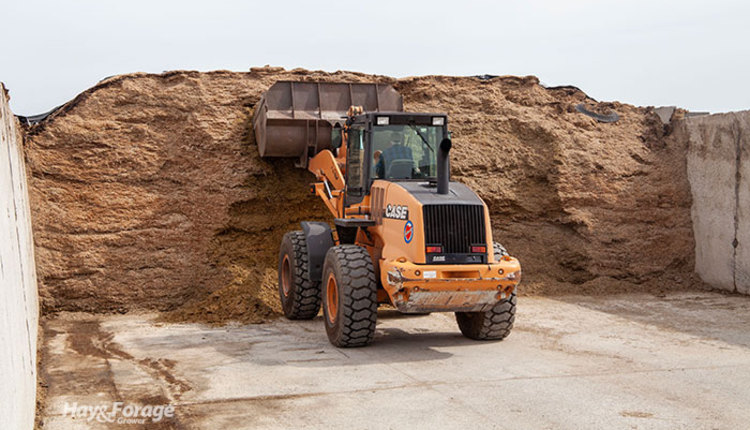
Although there is some debate about the ideal corn silage moisture, most can agree on the point at which it is too dry. Not only does this affect the nutritional composition of corn silage, but it can also impact storage and feedout efficiency.
Paulina Letelier, a dairy nutritionist and technical services specialist with Vita Plus, says many Midwestern producers reported harvesting corn for silage that was drier than normal this year — up to 40% dry matter. She notes the following challenges this can have on dairy ration formulation and offers strategies to overcome them.
1. Assess changes in starch. More mature corn silage will have a higher starch content, as well as more dry matter and neutral detergent fiber (NDF). Even so, starch digestibility will be lower since kernels get harder as plants mature. This could enhance post-ruminal starch fermentation and put cattle at risk of hemorrhagic bowel syndrome (HBS).
“Make sure the ration has adequate levels of fiber and ruminal starch to avoid overflow of starch to the small intestine,” Letelier states. “Check fecal starch, which should be less than 3%, and consider adding or increasing levels of monensin in the ration to maximize propionate production in the rumen.”
2. Provide more fiber. It is critical to include enough physically effective NDF (peNDF) in the diet to mitigate subclinical acidosis and maintain sufficient feed intake when starch content is greater than 20% of the total mixed ration (TMR) on a dry matter basis. Letelier recommends using a Penn State Particle Separator to estimate peNDF in a ration. She also suggests feeding nonforage sources of digestible fiber like soy hulls and corn gluten since mature corn silage will have an elevated amount of lignin.
3. Extend storage time. “During storage, bacterial activity is the main contributor to the breakdown of the prolamin protein matrix, which increases ruminal starch digestibility,” Letelier says. “When feeding drier corn silage, leverage storage time to make energy more available for milk production.”
4. Raise moisture levels. Dry corn silage will reduce the overall moisture of a TMR, which Letelier says should be at least 50% to deter cows from sorting larger forage particles. If moisture levels fall below this target, she recommends adding water or whey permeate to the diet or replacing dry ingredients with wet distillers or brewers grains.
“Keep in mind that this replacement strategy could disrupt ruminal biohydrogenation and potentially cause milkfat depression,” Letelier states.
5. Mitigate molds and yeasts. Dry corn silage can be harder to pack, which can lead to greater spoilage during storage. Moreover, the feedout rate will likely be slower since a pound of dry corn silage contains more dry matter than a pound of wet corn silage. This can also intensify oxygen exposure and encourage mold and yeast growth.
“High yeast counts in silages resulting from oxygen exposure can be detrimental to feed quality as they decrease net energy of lactation (NEL) content, increase shrink, disrupt rumen fermentation, and depress digestibility,” Letelier explains.
Remove spoiled silage from the top layer and shoulders of the storage site and routinely evaluate the feedout rate to maintain a fresh face. Dry corn silage is especially prone to mycotoxins, so Letelier suggests working with a nutritionist to incorporate mycotoxin neutralizers, binders, or antioxidants like vitamin E into animal diets.
6. Mix feed correctly. “Drier corn silages require increased mixing time,” Letelier asserts. “The corn silage should be added first in the mixer to maximize blending with other feed ingredients.”

